Pha That Luang
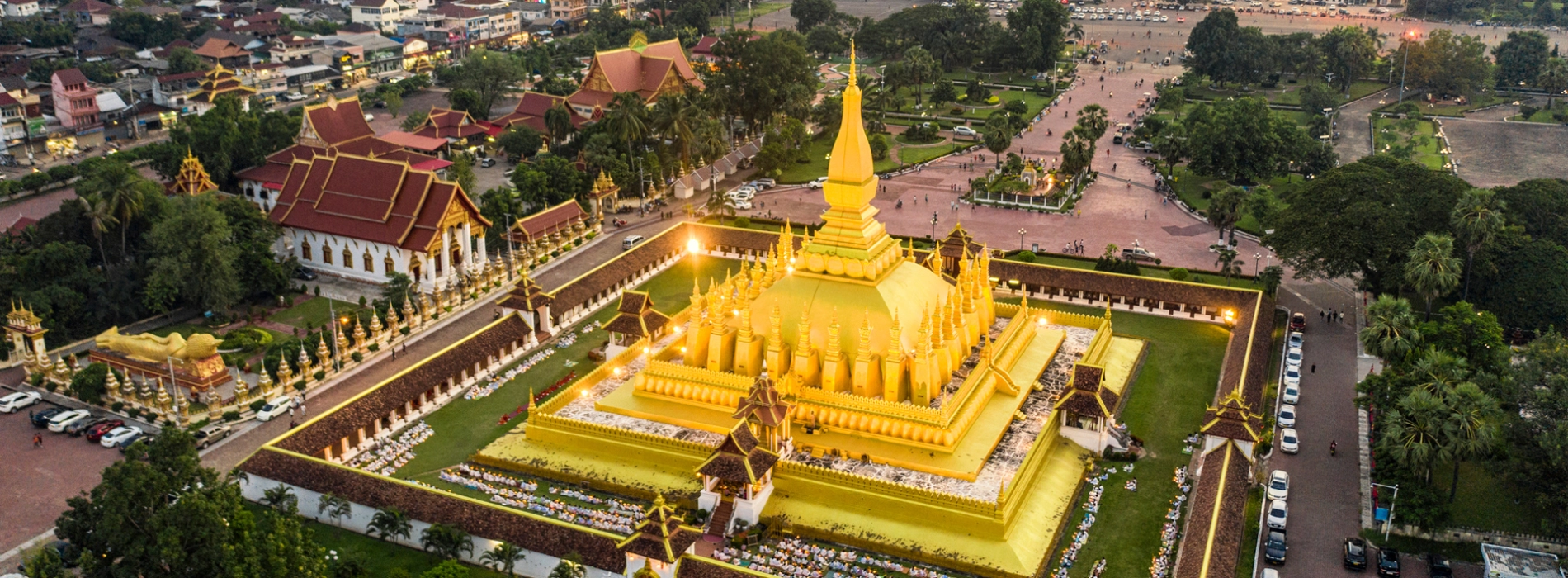
Pha That Luang, also known as the Great Golden Stupa, is a magnificent temple located in the capital of Laos, Vientiane. It is widely regarded as the national symbol of Laos, and the holiest Buddhist site in all the country.
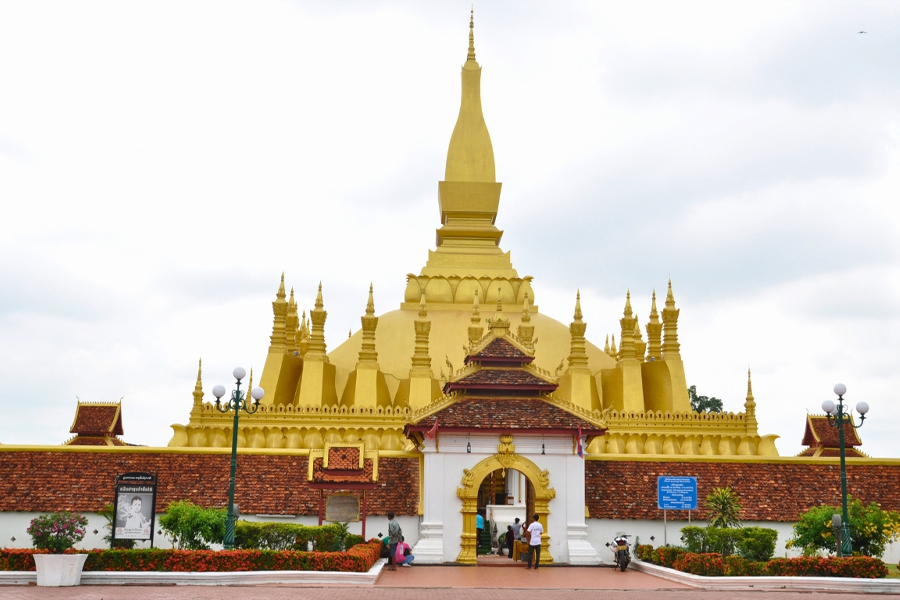
Pha That Luang (Cre: Indochina Voyages)
Pha That Luang is considered a witness of Lao history, having a history dating back from the 3rd century. Legend has it that five monks, after completing their Buddhist courses in India, were sent by Ashoka to Vientiane with sacred relics of the Buddha. There, they asked the lord of Vientiane to enshrine the relics into a stupa, which he gladly accepted. That’s how Pha That Luang came to be, back then was still considered a Khmer Temple.
It was not until the 16th century, under King Setthathirath that Pha That Luang became significantly important. King Setthathirath after moving the capital from Luang Prabang to Vientiane, had expanded and renovated the stupa, transforming it into a grand Buddhist monument.
Over the centuries, Pha That Luang underwent various reconstructions and renovations due to natural disasters and invasions. The temple suffered major damage during the Siamese-Laotian wars in the 19th century, leading to a period of neglect.
However, in the mid-20th century, the French colonial government and the Lao people restored Pha That Luang to its former glory. After completing the restoration in 1956, Pha That Luang became a symbol of national identity and Buddhism in Laos. It is not only a religious and cultural landmark but also a representation of Lao sovereignty.
Pha That Luang is a 45-meter-high tower, plated with shining gold. The base of the stupa is a square lotus flower blooming with golden petals in all four directions. On the lotus base is a high square pedestal with a complex structure.
The stupa is completely covered with around 500kg of gold leaf. Its distinctive design features a tapered cone shape, with multiple tiers decorated with intricate carvings and decorations. The top of the stupa is decorated with a gilded fin, called a parasol, which symbolizes royalty and spiritual enlightenment.
Surrounding the large tower are dozens of smaller stupas, not plated with gold but only painted in that color. Each small stupa is carefully carved with Buddhist teachings in Balinese script.
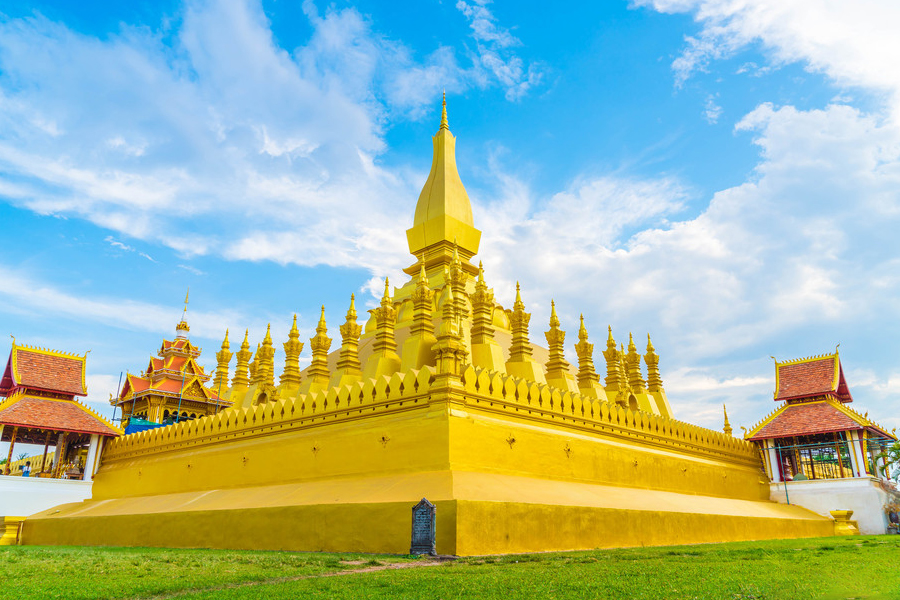
The architecture of Pha That Luang (Cre: Best Price Travel)
Pha That Luang was constructed on three levels, symbolizing the path of enlightenment from the Earth to the Sky according to Buddhist philosophy. There are hundreds of sema stones on the first level, which represents the underworld. The second one includes thirty little surrounding stupas, each representing one of the thirty Buddhist perfections, also known as the realm of existence. The prelude to the Kingdom of Heaven or the spiritual realm is the final one.
The complex Pha That Luang is separated into two parts: the exterior region and the inside of the stupa.
The stupa is surrounded by extensive grounds featuring temples, monuments, and a palace where monks still reside and study. It's worth strolling into the cloister to admire the Buddha's paintings, sculptures, and statues. There are also countless shrines at the foot of Pha That Luang, where many visitors send presents and flowers to honor the stupa.
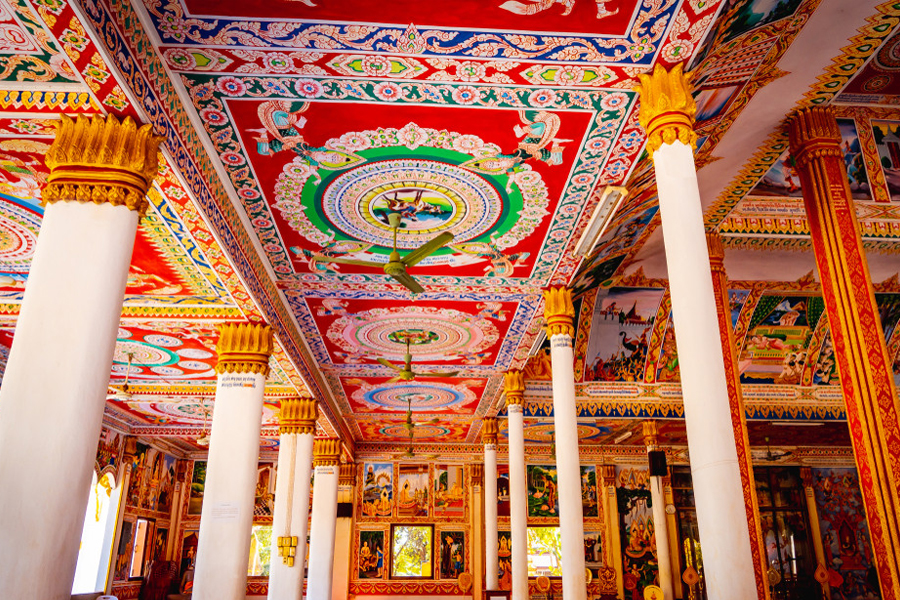
The vibrant decoration in the interior of Pha That Luang (Cre: Best Price Travel)
Pha That Luang's outer walls are surrounded by a covered walkway decorated with covered with beautiful carvings and statues. The area around the stupa is beautifully adorned with gardens, reflecting pools, and statues of mythical creatures and deities, adding grandeur and architectural beauty to the complex.
Throughout the complex, there are also many decorative artworks, such as sculptures, paintings, and elaborate mosaics. These creative decorations include scenes from Buddhist mythology, significant historical events, and the lives of religious figures.

Impressive intricate mosaics in Pha That Luang’s complex (Cre: Indochina Voyages)
The two most significant sculptures not to be missed are the Statue of King Sethathirath and Wat Neua That Luang. To honor his contributions, especially constructing Pha That Luang, the Lao people erected a statue of King Sethathirath right in the middle of the Saysettha gardens on the way to the main entrance to the stupa. Meanwhile, Wat Neua That Luang is a small temple inside the complex built in the Thai architectural style.
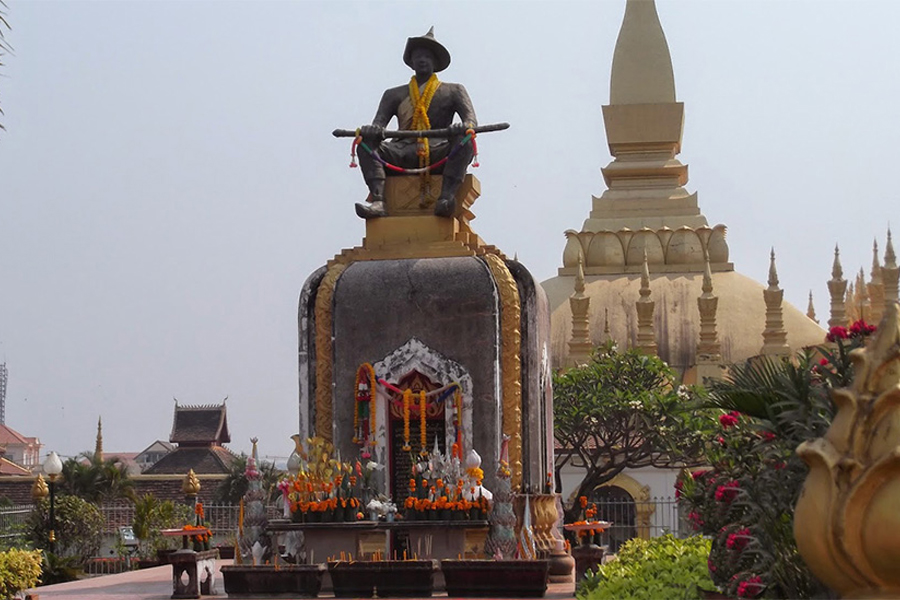
Statue of King Sethathirath in Pha That Luang’s garden (Cre: Laos Tour 999)
Pha That Luang is not only a sacred site but also an important symbol of Lao cultural identity and heritage. Its golden splendor, rich history, and spiritual significance make it a must-visit destination for anyone traveling to Vientiane. When you visit Pha That Luang, you can immerse yourself in the great architecture and the spiritual ambiance of the temple. The temple attracts a lot of people to worship each day, creating a serene atmosphere.
In addition, you can participate in the annual Boun That Luang festival, which takes place around October and November (December of the Lao Lunar Calendar), a significant Buddhist celebration that attracts thousands of pilgrims from around the country and beyond. There are plenty of parades, traditional music shows, carnivals, and religious ceremonies such as the Buddha bathing ceremony and the rice offering ceremony happening during the festival, making this an event that you must not miss.

Boun That Luang Festival, one of the most important Buddhist ceremonies (Cre: Best Price Travel)
Maybe you’ll like: Laos Summer Travelling: Unmissable Destinations
The best time to visit Pha That Luang, the Great Stupa in Vientiane, Laos, is during the dry season, which typically runs from November to February. This period offers cooler temperatures and less humidity, making it more comfortable for sightseeing and outdoor activities.
In addition, as we have mentioned, you should visit around October to November as that is the time of the Boun That Luang festival, allowing you to participate in the fun activities.
Pha That Luang is located on Ban Nongbone, about 4 kilometers away from the northeast of Vientiane. Although it is on the outskirts, reaching the Pha That Luang is quite convenient. You can easily hire a vehicle, either by making your own arrangements or through services offered by hotels, guest houses, or homestays.
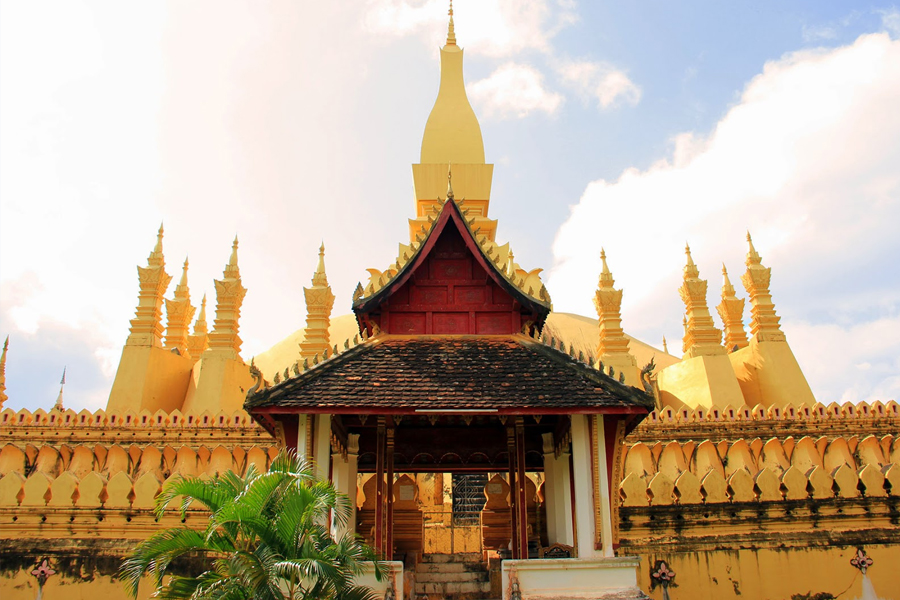
How to get to Pha That Luang (Cre: Topplus)
In conclusion, Pha That Luang is not only a magnificent, religious site but also a place of national pride to the people of Laos with great spiritual importance and the host of vibrant festivals, making this a must-visit place for travelers. Want to explore Pha That Luang and other attractions in Vientiane? Contact Asia King Travel right away to plan your trip.
Maybe you’ll like: Laos Tours 7 days